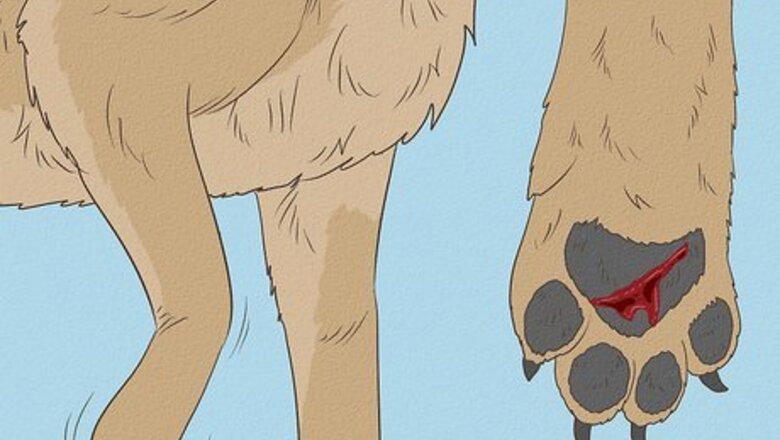
views
- Fill a bucket or bowl with warm water and 1 tsp (4.9 mL) of antibacterial soap, then swish the paw in the water for 1-2 minutes.
- Press a clean bandage lightly to the wound to stop any bleeding, then cover the pad with a new, sterile bandage.
- Wrap the sterile bandage in gauze or animal-specific wound wrapping, up to the dog’s ankle, and visit your veterinarian for further treatment.
Applying First Aid
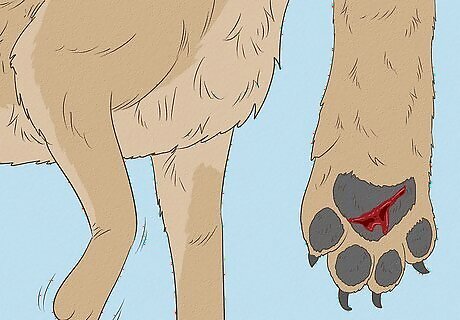
Examine your dog’s paw if they limp, are licking it, or bleeding. If your dog suddenly is unwilling to put any weight on a particular foot, is excessively licking it, or tracking blood, odds are they have a paw pad injury. Gently take the paw and look between the toes, on top of the foot, and between the pads. Check for bleeding, cuts or abrasions, debris stuck in the pad, or an injured dew claw. Your dog may also have a ripped nail, which can cause a lot of bleeding. Approach your dog cautiously, since they may be prone to snapping if they’re in pain. Be gentle and talk in a soothing voice.
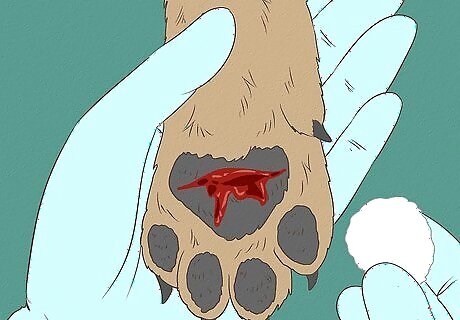
See a vet if the wound is larger than 0.5 in (1.3 cm). First aid at home is usually sufficient for a small, shallow, and uninfected wound. However, if the cut is deep, swollen, discolored, bleeds excessively, or oozes fluids other than blood, consult a vet. While many vets do not stitch small cuts, they may give your dog antibiotics to help fight a possible infection. Act quickly when you notice a potential problem. Paw injuries are susceptible to being contaminated by bacteria.
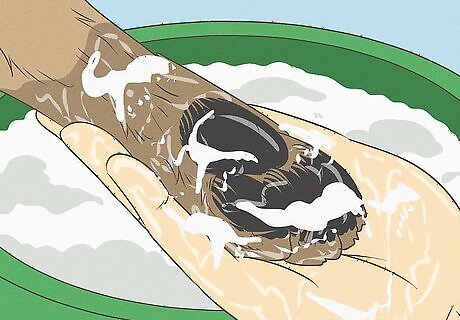
Rinse the wound in a bowl of warm, soapy water. Fill a bowl or bucket with lukewarm water and add 1 tsp (4.9 mL) of antibacterial soap. Gently take your dog’s paw and swish it around in the water for 1-2 minutes to clean the wound and rinse out any debris. If your dog is hesitant or resists, simply run the paw under lukewarm water instead, targeting the wound as best you can. Also, remove any easily dislodged debris with tweezers. If the debris is deeply embedded, see a vet. Avoid the use of any antiseptics or antibiotics without vet approval.
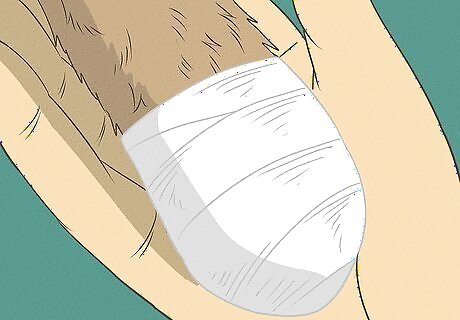
Press a clean bandage to the wound to stop the bleeding. If your dog's paw continues to bleed after you have removed any debris and washed the wound, use a clean bandage or cloth to apply light pressure to the area until the bleeding stops. If you cannot control the bleeding after 5 minutes of continuous pressure, seek veterinary care. Have the dog lay down and elevate the injured paw to help slow the bleeding.

Place an absorbent pad on the wound. Position a sterile, non-stick dressing pad large enough to cover the entire wound over the injury. Or, use wound padding found in most first aid kits.
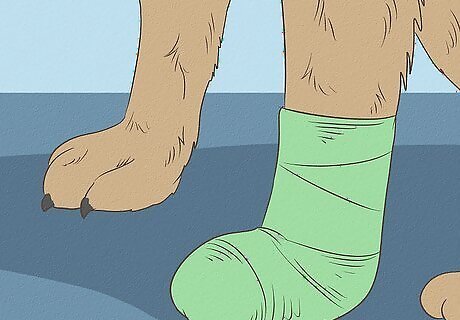
Wrap the injured paw with a self-adhering bandage. With light pressure, wrap the paw with a self-adhering bandage, ideally one made for animals (such as Vertrap, Pet-Flex, or Pet Wrap). Leave the front toes out, and wrap the paw up to the wrist joint. The claws of the paw should be nearly touching. Check that the wrapping is snug enough that it stays on their foot but loose enough that you can place two fingers under the bandaging. If the claws are separated or if the foot feels cold, you have tied the bandage too tight. Remove it and rewrap the paw. Tying the bandage too tight can cut off the blood supply to the paw and may even cause limb death. Call your vet if you are worried about tying the bandage too tightly. This will not only protect the injury from being infected, it will also offer additional cushioning for the foot pad.
Ongoing Care & Recovery
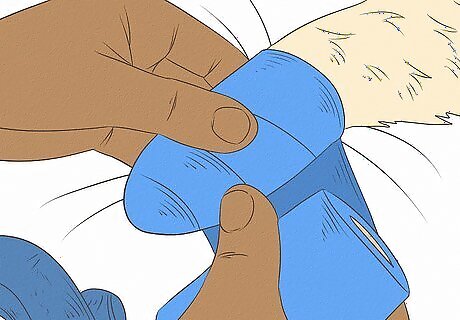
Change and rewrap the bandage daily. Until your dog's paw is healed, replace the wound dressing each day, or more often if there is additional bleeding or seepage. Since dogs sweat from their paws, keep a close eye on the bandage to ensure it stays dry and clean. When you change the bandage, look for signs of infection like heat, swelling, foul odor discharge, or redness. Take your dog to the vet immediately if you notice any of these.
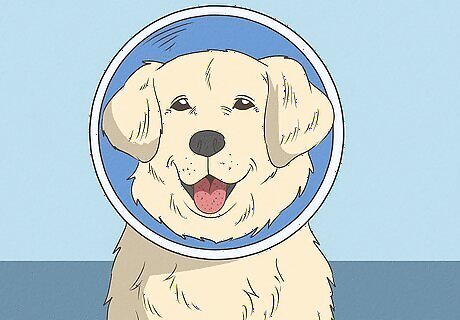
Stop your dog from licking or chewing the bandages with an E-collar. Dogs may try to lick or remove the gauze and bandage, and this will lengthen the time it takes for the wound to heal or even lead to infection. Fit your dog with a cone to prevent this until the wound has healed. E-collars come in a variety of designs. The most effective is often the traditional cone shape.
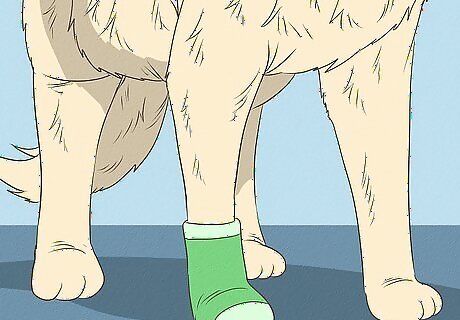
Cover the pad with a sock or dog boot when going outside. Even though your dog is injured, they will still need to go out for a walk or potty break occasionally. To further protect your dog's paw and to keep the recovery on track, temporarily place a sock over the bandage. Or, use a dog boot to cover the wound and bandages when going outside. Remove this covering when inside to let the wound breathe.
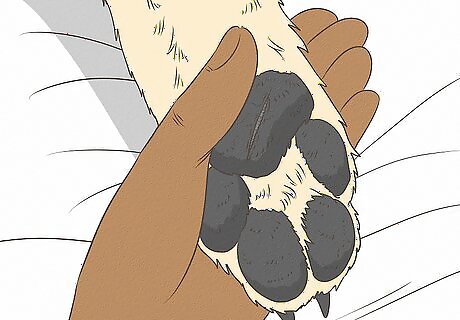
Reassess the situation after a few days. If, after three days of treatment, the wound continues to bleed or opens up, take your dog to a veterinarian for further treatment.
Preventing Future Injuries
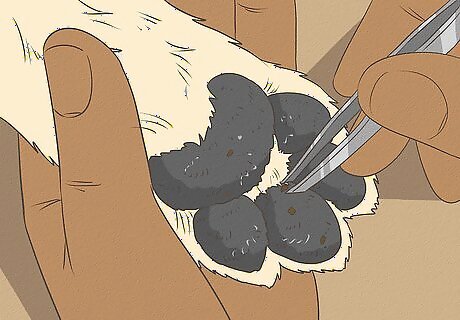
Inspect your dog's paws after being outdoors. After time outside, make sure no debris is lodged in the dog's paw that can cause problems or tears. Clean between your dog's toes for pebbles, seeds, and other debris that can irritate and cut them. Remove these with tweezers. Keep a bucket of water nearby to quickly rinse the dog's paws when they come inside.
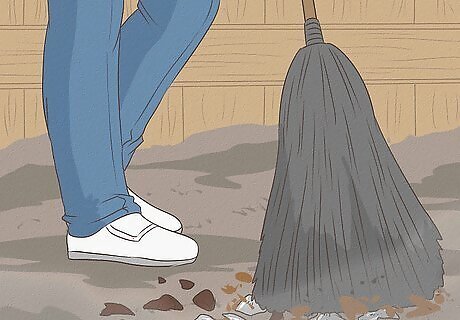
Keep your yard clean and avoid rough terrain. Remove or keep away from any debris or surface hazards. Check your yard or walking route for broken glass, small pebbles, or metal to make sure none of these can get lodged into your dog's paws. Preventing injuries is much easier than treating them.
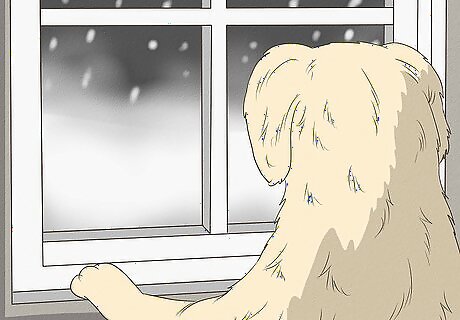
Stay inside during extreme weather conditions. Your dog's paws are sensitive to both very high and very low temperatures, hot pavement, snow, ice, and salt. When it's extremely hot outside, try to take your dog out before dawn or after sundown to avoid heat-related blisters or irritations on your dog's pads.. Or, use dog booties when venturing outside in extreme conditions.
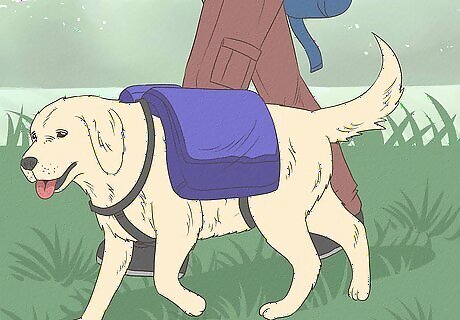
Moisturize your dog's paws to keep them in good condition. Moisturizing your dog’s paw pads strengthens and prevents them from becoming cracked and dry. Use moisturizer designed for dogs, as human products are not good for them. Ask your vet for a recommended formula, or massage your dog’s paws with vitamin E ointment.
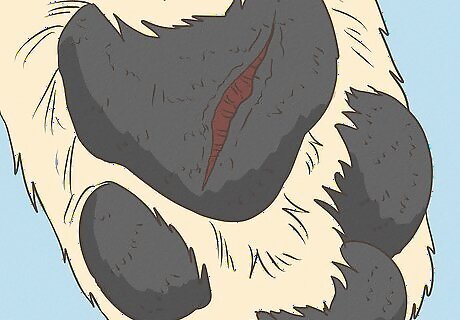
Ease your dog into physical activities to prevent overuse injury. Just like human athletes, dogs need time to get their bodies used to a new fitness routine. If you take up hiking or running, start small and gradually acclimate your dog and their paws to this new activity to prevent chafing or cracking.
Types of Paw Pad Injuries
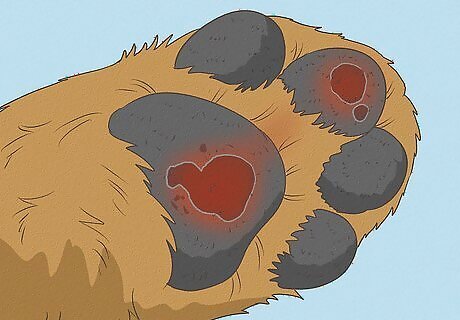
Cuts, lacerations, or flaps These are common injuries most often caused by sharp objects like nails, glass, or, sharp gravel tearing or entering the paw. Sometimes, these may cause “flaps” of skin to tear partially away, which require a vet’s assistance to remove.
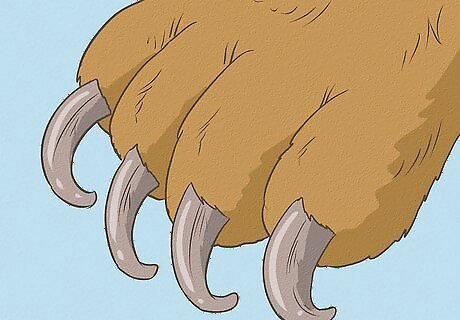
Burns Dog’s paws are sensitive to extreme temperatures. Temperatures of 85 °F (29 °C) are enough to heat the pavement to dangerous levels, which may cause blisters or burns on your dog’s paw pads. Similarly, below-freezing temperatures can result in frostbite, which appears as gray or white discoloration on the pads. If your dog suffers chemical burns, wash the area thoroughly with running water for 5 minutes before taking them to the vet for treatment.
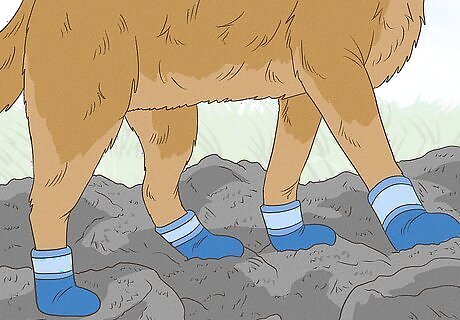
Ingrown or overgrown nails Ungroomed nails can also cause complications. Nails left to grow unchecked can cause deformed paws. Occasionally, a nail may grow inward, which can cause infection and extreme discomfort, and requires veterinary assistance. Trim your dog’s nails anytime you can hear them clacking on the ground.
Regular wear Frequently walking on rough terrain, or even simple overuse, can wear down your dog’s paw pads or cause them to tear or blister more easily. Always keep an eye on your dog for limping, sluggishness, or signs of fatigue, and fit them with dog shoes if you’re crossing coarse terrain.
















Comments
0 comment